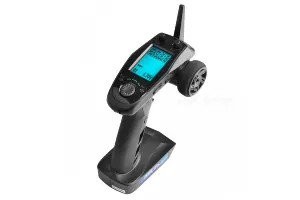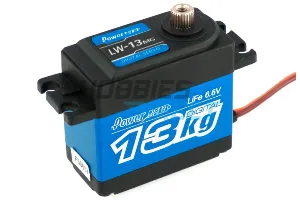How to: Steering servo troubleshooting
Aaron Morris
|
5th March, 2023
|
7 min read
Is your RC car not steering? Here’s how to troubleshoot and figure out what’s wrong.
To view this blog in its original YouTube form, click here.
RC Car steering servos have a hard life. They’re directly attached to your front wheels and cop all those vibrations and impacts from jumps and crashes. That little gearbox has a limit and when that limit is reached, will either strip or burn out. But! Before going off and spending your hard earned cash on a replacement, let’s do some troubleshooting to confirm what component has failed.
There’s two overall reasons for an RC car not responding to steering input:
- The servo is not receiving signal.
- Or, it is receiving signal, but physical damage is preventing it from normal operation.
Just because your RC car isn’t steering, doesn’t necessarily mean anything is faulty.
The very first thing is to check all connections – make sure the servo is still plugged into the receiver properly. The steering servo plugs into channel one on your receiver, with the ESC going to channel 2. Remember: 1 to turn, 2 to burn.
Make sure the connector is oriented properly. The signal lead (usually white or yellow) will usually be on the left, then positive, then negative. Your receiver will have a little diagram on it showing Proper Polarity Positioning. Also check that there’s no obvious physical damage to the servo wires, like frayed or cut wires, or wires that have been crimped at an extreme angle.
Next, check the settings on your hand controller, there may be a dial or switch labelled D/R. This stands for Dual Rate, but just think of it as Steering Amount. This is useful for turning down the servo’s movement so it’s not struggling to steer more than the car is capable of turning. Most servos operate in 60 degrees of movement left and 60 degrees right, so a total of 120 degrees of travel. However, your steering rack may only require 45 degrees to attain full steering lock. This is where D/R comes in. Turn down the D/R, and you will prolong the life of your steering servo and prevent unnecessary wear when the servo is trying to travel past the maximum steering angle.
Although D/R has a useful purpose, if it’s bumped or turned all the way down, you’ll have no steering at all. On some remotes it’s a toggle switch like this, and on others, buttons or dials. On the FlySky GT-2 that comes with a lot of cars it’s the dial on the right, and you actually turn it counter clockwise to increase steering amount.
If you turn up the steering dual rate and your car starts steering again, problem solved.
So, if still no lefty-righty action, there’s more we can test to correctly diagnose the issue.
Firstly, are there any signs of life at all from the servo? Does it move, but only in one direction, or slowly, or get stuck in one position? This is usually a sign the servo’s electronics have worn out or have been damaged, and it’s time for a replacement.
If you are getting a normal-ish response, but it’s all grinding noises like the gears have stripped, then that’s exactly what has happened. It’s worth noting that if the car’s servo saver and steering assembly has been overwhelmed by an impact to the point that the servo’s gears have been damaged, typically the manufacturer will not cover physical damage under warranty.
Most RC companies sell replacement gear sets so you can repair it. Or, take it as an opportunity to upgrade to a stronger, faster servo.
Still no signs of life? Don’t worry, there’s still more troubleshooting to do.
Rather than the servo being at fault, we might instead look at the transmitter and receiver. The receiver could be faulty and not telling the servo to move, or the remote control could be faulty and not actually be sending a steering signal. There’s an easy way to test this:
Remember how at the start of the video we said steering is always plugged into channel 1 and the ESC into channel 2? We’re gonna swap those around.
On a fully functional car, this will make the steering move with the trigger, and throttle with the wheel.
If you do this and there’s still no steering response from the trigger, but if you do have throttle on the wheel, then the servo has burned out, and needs to be replaced.
The other, much-less-likely outcome is the servo suddenly springs to life with the trigger, but you have no throttle with the wheel.
Before getting a new receiver or transmitter, it’s worth reading through your transmitters specific manual and seeing if there are any other settings that would affect the steering signal output such as D/R & end points.
With these newfound diagnostic abilities, you should be able to diagnose any steering problems with your, or your mates’, cars.
Thank you for reading, I hope this blog helps steer you in the right direction while troubleshooting! ‘Til next we meet, bye!
Related Products
Related Posts
Comments






